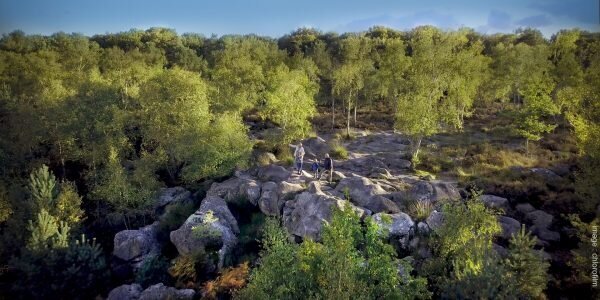The forest
Situated at the gateway to Paris, just 60 kilometres further south, between Brie and Gâtinais, the ancient forest of Bière has been known as the forest of Fontainebleau since the seventeenth century. The woodland around Fontainebleau consists of two national forests : Trois Pignons and Fontainebleau, with stands of deciduous and softwood trees.
While the forest of Fontainebleau was one of the royal estates from the tenth century onwards, the forest of Trois Pignons was private until it was finally bought by the state in 1983, bringing the surface area of state-owned woodland to more than 22,000 hectares. Bordered by three rivers, the Seine to the east, the École to the west and the Loing to the south, most of the forest (19,200 hectares) lies in the département of Seine-et- Marne. To the west, in the Trois Pignons forest, some of the woodland (800 hectares) lies in the département of Essonne.
The second-largest national forest in France, it is concentrated mainly on the municipality of Fontainebleau. Fontainebleau is the largest forest area in the Ile-de-France region and boasts the distinction that more than 98% of its territory is occupied by two national heritage attractions: the château of Fontainebleau and the national forest of Fontainebleau. Major regional planning and development measures have affected the forest, which is crossed and fragmented by numerous communications infrastructures, such as the N6 and N7 trunk roads, the A6 motorway, the Paris-Lyon railway lines and high-voltage electricity lines.
Tell us what the Fontainebleau Forest is for you on Facebook and Instagram !





